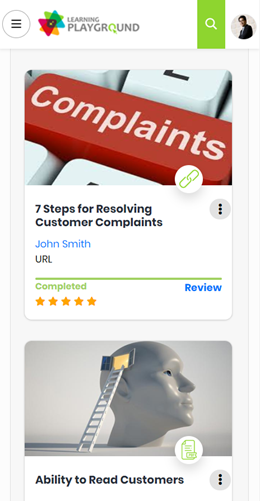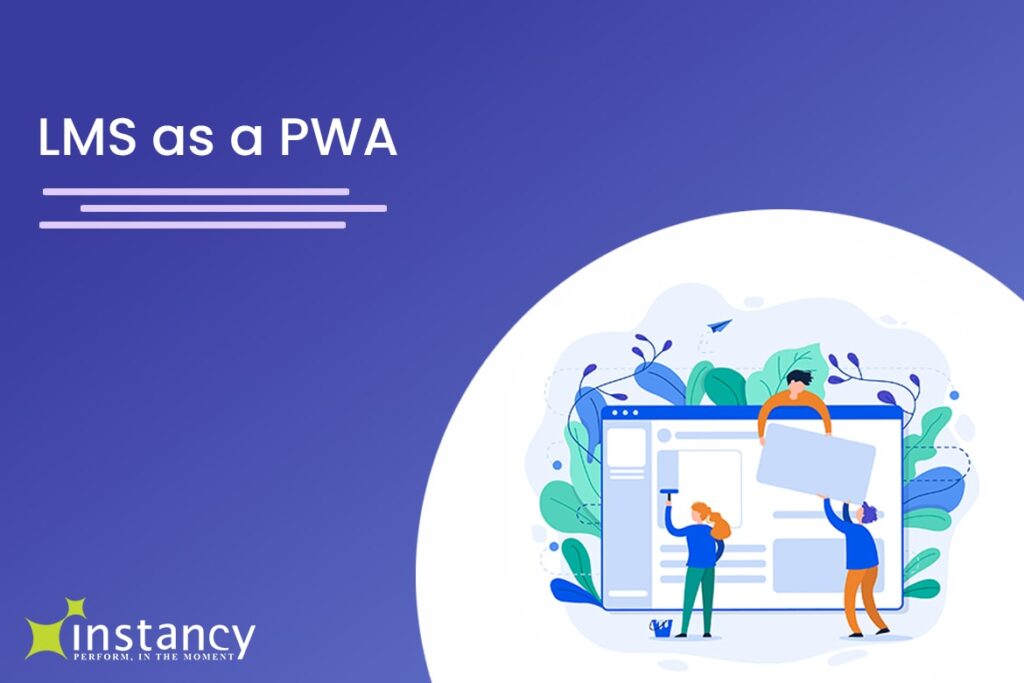


Educational websites that invite learners to take online courses must leverage on the benefits that new innovation in web technology offers. One of such innovation is the introduction of Progress Web Apps (PWA).
What is a Progress Web App?
PWA is the next big thing in mobile web; it leverages on latest technologies to combine the best of web and mobile apps leading to improved functionalites. It also offers a user mobile experience similar to what is obtainable in a native app. In other words, PWA takes advantage of the characteristics of mobile apps resulting in improved user retention, and performance with no complex complications.
In today’s world, learning platforms can easily take advantage of PWA to connect with learners since most of them use mobile devices when compared to desktop computers. The learning website can be downloaded on a mobile device as an app icon on the home screen.
PWA’s are quite effective for learning platforms; this is because they offer push notification which makes it easy to achieve up to three times more retention than mobile apps without push notificaation.
Although, your content may be videos, PDF files or eLearning courses but, the eLearning courses must be mobile responsive webpages that can be viewed through the PWA.
In addition, a well designed mobile app consumes fewer data and is much faster, which makes PWA’s perfect for students.
Features and Benefits of PWA’s
Progressive Web Apps (PWAs) are websites that act like Native Mobile Apps. Native apps, such as mobile apps, are known to be very efficient. They are ‘always on’, and ever-present when a user wishes to use them. Some of the features and benefits are:
1.Known to be reliable
2.Work regardless of network connection
3.Launch as a standalone experience
4.Read and write files from the local file system
5.Can access hardware such as USB devices or Bluetooth
6.Interact with contacts and calendar
7.Take photographs
8.Manage media playlists such as music
Progressive web apps do almost everything that native apps do but add:
- Ease of installation
- High reachability
- Can reach anyone, anywhere, on any device (no need to code for different mobile operating systems)
Capable, Reliable, and Installable
Those are the three most important aspects to consider for Progressive Web apps.
When looking at the capabilities of PWAs, most of the capabilities center around the developers and the tools currently available to mimic a native app. However, this is outside the scope of this article.
We measure reliability by factors such as:
1.Dependability
2.Speed
3.Performance
4.Smooth scrolling and animation
The installable requirement of Progressive Web Apps goes beyond just being able to easily install it. Other factors include:
1.PWAs run in a standalone window and not in a web browser
2.App launches from a variety of locations, including user’s home screen, dock, taskbar, or shelf
3.Keyboard shortcuts
4.Manages can accept content from other applications
According to Sam Richard and Pete LePage in their article on PWAs, consider these statistics:
1. Twitter saw a 65% increase in pages per session, 75% more Tweets, and a 20% decrease in bounce rate, all while reducing the size of their app by over 97.
2.Nikkei saw 2.3 times more organic traffic, 58% more subscriptions, and 49% more daily active users.
3.Hulu saw a 27% increase in return visits.
Progressive Web Apps can be installed by anyone, anywhere, on any device
Progressive Web Apps have some distinct advantages.
1.Add to Home Screen Prompt
The add to home screen prompt makes it easy for users to install PWAs on their devices. On their desktop, the user receives a prompt to ‘add to home screen’. Once accepted, the browser-based web app looks like a native app, even on their desktop. The progressive web app has the same visibility and accessibility as if the user were using a native app.
Customize your PWA technology. Define splash screens. Design a home screen icon. Manage theme colors.
2.PWA in Offline Mode
When using a native app and you disconnect from the Internet, you can still browse that page until a connection is reestablished. The same is true for a progressive web app. Progressive web apps are built around the concept of offline first. This means that because of PWA’s robust caching system, it handles offline requests and completes them once a connection is available.
3.Web Push Notifications
Push notifications are great communication tools. Although they look like text messages, they are different and usually only found on mobile devices. With progressive web app technology, users see push notifications on their desktop as well. Businesses can use push notifications to communicate with their site visitors. The technology is quite effective in eCommerce sites. If you want to be able to communicate with your learners in this manner or request them to go to a course catalog and purchase or reserve a course, you definitely want to consider using push notifications.
4.No App Stores
Since progressive apps appear as a native app, there is no need to use native apps you download from the app store. As long as the user is connected to the Internet, users get the most up-to-date content. For example, if your user is on the learning site and new content gets published, their screen refreshes. The user experience is not impacted.




